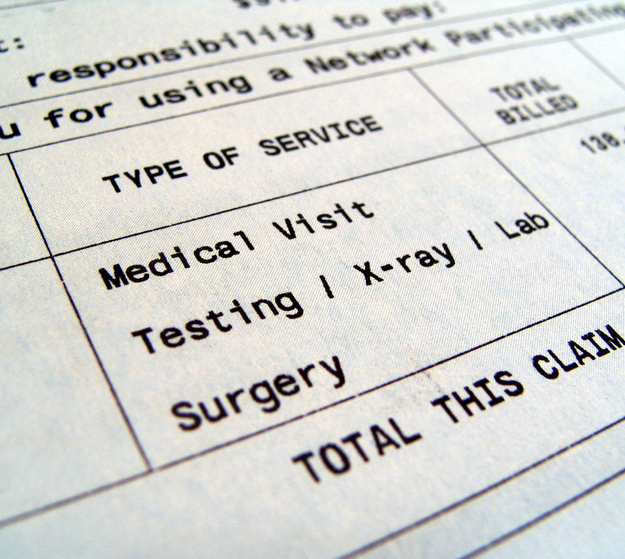
It’s time to end the business of surprise medical bills. Here’s how. Momentum appears to be building in Congress for legislation to end so-called surprise medical bills. As a health plan CEO, I couldn’t agree more—the practice needs to end. But more legislation won’t offer a cure.
The big data we need to develop a solution already exists, folks. It’s time we do the hard work to drive price variation out of care. What’s behind the frustrating and scary “surprise” of high-cost medical bills? Simply stated – a system designed with traps, dead-ends and hedges to keep consumers uninformed and powerless.

With the Rise of AI, What IP Disputes in Healthcare Are Likely to Emerge?
Munck Wilson Mandala Partner Greg Howison shared his perspective on some of the legal ramifications around AI, IP, connected devices and the data they generate, in response to emailed questions.
The actors behind the surprise—insurance companies, employers, providers, regulators and policy makers—perpetuate the confusion. Recognizing that bad policy and bad business practices have brought us to this crescendo of waste and inequity is very uncomfortable. Most of us believe we’re here to help the sick, yet we have become slaves to a system designed to increase illness and payments.
We have built a business of healthcare that, frankly, should be called the “illness burden treatment system.” I know, heresy. But take a look at the incentives: Providers get paid more when patients are sicker (surprise!). Insurers risk-adjust premiums based on underlying patient populations that are sicker (surprise!). Worst of all, we’ve set clinical value on cost-based inputs versus health-based outcomes.
Meaning that providers get paid more for doing costlier, more invasive and, to some degree, hurtful things to you the patient (surprise!). Economists have long warned that prices are the main cause of this wasteful reality of the U.S. healthcare system and that, in this case, higher prices do not yield higher quality.
The problem with current Federal price transparency efforts, like the requirement for hospitals to post prices on their website, is they require someone to understand medical billing and coding in order to estimate their costs for treatment. It would be like expecting consumers to understand prices at a grocery store using wholesale SKUs. Impossible!
What’s the antidote? Well, the opposite of surprise is knowledge and expectation. Real-time pricing helps markets become more efficient. We have the data sets and computational power needed to eliminate the fog around healthcare costs and how much consumers owe. Instead of pricing coverage as one-size-fits-all and pre-purchased during enrollment periods, we must price coverage in real-time, and allow consumers to see the cost variations of their provider options in advance of receiving care.
Price variation will start to dissipate as consumers search for and choose affordable services in their market. With this approach, we can also eliminate the treatments that offer no clinical value and reduce excessive prices that pervade our health system, yet remain hidden to consumers. It’s time to stop just treating the sick and start empowering people to proactively manage their health to stay well.
Employers and insurers, let’s remove paralyzing high deductibles and give consumers access to real-time pricing. Let’s offer lower copays for high-value treatments and quality providers. In doing so, we can guide consumers down effective and efficient paths. It’s not rocket science (or legislative action), folks. People will start buying better, and it will save everyone money. We have the power to change the system, so let’s do it. And let’s save the surprises for the happy things in life.
Tony Miller is CEO of Bind. Miller’s passion for the health care system to be designed by consumers comes from his mother. The matriarch of a blue-collar family, she would often tell physicians how she wanted all of her children to be treated while referencing her ever-present Grey’s Anatomy Handbook.
His impatience and irreverence with the status quo led him to co-found Definity Health in the late 1990’s. He pioneered consumer-driven health care because he passionately believes that changing the financing of health care holds the key to redesigning our broken system. After Definity was sold to UnitedHealth Group in 2004, Tony went on to found and lead Lemhi Ventures, a venture capital fund dedicated to starting, and growing disruptive businesses to redesign health care. As part of Lemhi, he launched carol.com—a novel way to connect a consumer’s pocketbook to their provider choices. Carol’s consumer website allowed people to shop and compare providers on a “care marketplace”.
While both companies were successfully launched, proven and sold, Tony’s quest to truly solve our health system’s core problem was not complete. In 2016, he decided to throw out the traditional health plan model and rebuild it on an entirely novel financing system. Imagine having health care coverage for the way we actually use the health care system (not some health policy fantasy). Imagine having all of the treatment options and provider choices built upon your health conditions. Imagine health insurance that’s simple and available “on demand”. It’s finally here. With Bind, On-Demand Health Insurance, Tony and his team promise to truly change the way health insurance works.















